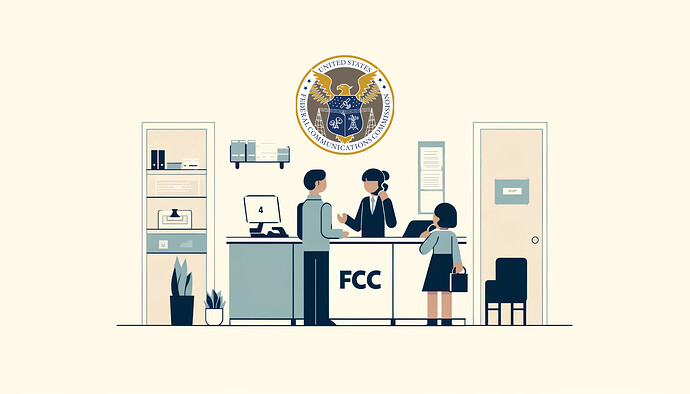The Federal Communications Commission (FCC) is a government agency that regulates interstate telecommunications services. If you’re having issues with your phone, internet, or other telecom service provider, you can file a complaint with the FCC.
Here’s a detailed guide on filing a complaint against a telecom operator:
First, Contact Your Telecom Operator:
It’s often faster to resolve your issue directly. Check their customer service contact information on your bill or the website of the telecom service provider. Aim for a resolution within 30 days.
Some major telecom operators in the United States:
- National Carriers: AT&T, Verizon, and T-Mobile.
- Regional Carriers: US Cellular, Comcast Xfinity Mobile, Charter Spectrum Mobile, and Cox Communications
Other Notable Carriers: Cricket Wireless, Metro by T-Mobile, Mint Mobile, and Google Fi (utilizes networks from multiple providers).
If unresolved, escalate the issue to their nodal authorities (higher management within the provider’s structure).
File Your Complaint to FCC:
The FCC provides multiple ways to file:
-
Online Complaint Form (Recommended): This is the quickest and easiest method. Visit the “FCC’s Consumer Complaint Center (fcc.gov)” and choose the category that best describes your issue.
-
Phone:
- FCC Hotline: 1888-CALL-FCC (1888-225-5322)
- Videophone: 1844-432-2275 (ASL users)
- TTY: 1888-532-2275 (hearing impaired users)
-
Email: DRO@fcc.gov (for disability-related written complaints)
You may submit this complaint form by toll-free fax to +18664180232 or postal mail to:
- Address: Federal Communications Commission, Consumer & Governmental Affairs Bureau, Consumer Inquiries and Complaints Division, 45 L Street, NE, Washington, D.C. 20554.
In case of emergency, call the 24×7 Operations Center at +12024181122.
Note: For submitting a complaint offline or by postal mail, download the informal complaint form.
What Information to Include:
- Your name and contact information
- Your telecom service provider’s name
- A detailed description of your complaint, including dates, times, reference numbers, and any previous communication with your provider
- Copies of relevant documents (e.g., bills, service agreements, communication records)
Next: The FCC will review your complaint and may contact you for additional information. They will send your complaint to your service provider, who has 30 days to respond directly to you. They may also investigate your complaint depending on the nature of the issue.
Formal Complaint:
If you’re not satisfied with the provider’s response or the issue remains unresolved, consider filing a formal complaint with the FCC.
Note: You typically have 6 months from the final response on your informal complaint to file a formal one. Legal counsel may be necessary for this step.
Before taking legal action, understand this:
- Federal District Court: For the recovery of damages (financial damage by telecom carriers), you may bring a lawsuit in a United States District Court under section 207 of the Communications Act. 47 U.S.C. § 207.
- Federal Communications Commissions: You may also file a legal action or lawsuit at the FCC under Section 208 of the Communications Act. 47 U.S.C. § 208. In addition, You have to submit a prescribed filing fee to the commission with this type of complaint.
Mostly this type of legal action is filed when:
- The person or entity filing the complaint
- Seeks a written commission ruling which directs a carrier to pay damages resulting from an unlawful act.
To contact the Enforcement Bureau (EB) of the Commission (FFC) you may dial 202-418-7450 or visit the Enforcement Bureau, a unit of the Commission, responsible for enforcing the provisions of the Communications Act, as amended, the Commission’s rules, orders, and various licensing terms and conditions.
For more information, read this article: How to file a complaint to Federal Communications Commission, USA?
Tips: Keep a record of all communications, reference numbers, and documents related to your complaint for future reference. The FCC’s Consumer Help Center is available to guide you through the process if you need further assistance.
Still, have questions? ![]() Ask by replying below.
Ask by replying below. ![]() We will help you.
We will help you.
